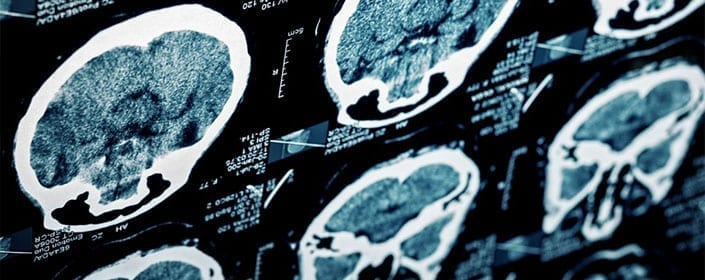
by admin | Apr 30, 2019 | Hyperbaric Oxygen Therapy, Stem Cell Research, Stem Cell Therapy, Traumatic Brain Injury
Traumatic brain injury (TBI) encompasses a wide range of injuries, neurological problems, and outcomes. On one end of the spectrum is a concussion, which can be mild and short lasting. At the other end of the spectrum, traumatic brain injury can be lethal or leave patients with chronic mental and physical problems. Despite this range of severities, traumatic brain injury is one of the leading causes of disability in the United States, affecting over 13 million people. People who suffer from chronic symptoms related to traumatic brain injury may struggle with chronic seizures, memory problems, concentration problems, agitation, among others. TBI can have profoundly worsened a person’s quality of life and overall well-being.
Unfortunately, little can be done to treat traumatic brain injury directly. Aside from treating symptoms, the main treatment for TBI is to have the patient to rest and avoid stimulation in an effort to give the brain time to heal. Patients can regain some function through intensive work with physical, occupational, speech, and recreational therapist. However, the brain’s ability to heal itself is limited compared to other tissues of the body. In short, the brain has very little capacity to make new brain cells after we are born. So once TBI has occurred, patients either need to depend on other healthy areas of the brain or simply adapt to their circumstances.
Fortunately, researchers are finding ways to improve on nature through hyperbaric oxygen therapy. Drs. Shandley, Wolf and other hyperbaric medicine researchers recruited a group of 28 military veterans who sustained a traumatic brain injury in Iraq or Afghanistan. These individuals had ongoing cognitive problems as a result of their brain injuries. Researchers placed some study participants in 2.4 atm avoid hundred percent oxygen, while the others simply underwent a placebo experience at basically normal pressure and oxygen levels. The two groups underwent 30 exposures each and took a cognitive test before and after these treatments.
Hyperbaric oxygen therapy increased the number of stem cells in the blood of patients with TBI. In other words, hyperbaric oxygen treatment was able to move stem cells from the bone marrow and perhaps other tissues into the bloodstream. At the same time, those treated with hyperbaric oxygen performed better on tests of cognition including ImPACT, BrainCheckers, and PCL-M test. Moreover, no adverse effects of treatment were observed. Taken together, these results suggest 30 sessions of hyperbaric oxygen treatment at 2.4 atm was able to increase stem cells in the blood and improve cognition in US warfighters who suffered traumatic brain injury during combat. These results are encouraging news for the millions of veterans and nonveterans who sustained a traumatic brain injury every year.
Reference: Shandley, S. et al. (2017). Increased circulating stem cells and better cognitive performance in traumatic brain injury subjects following hyperbaric oxygen therapy. Undersea & Hyperbaric Medical Society. 2017 May-Jun;44(3):257-269.

by admin | Nov 5, 2018 | Hyperbaric Oxygen Therapy, Traumatic Brain Injury
Many US warfighters are left with traumatic brain injury (TBI) and/or posttraumatic stress disorder (PTSD) after suffering blast injury during battle. TBI is one of the leading causes of disability in the United States, and PTSD is rapidly becoming a leading cause of disability among US veterans. PTSD leaves sufferers with flashbacks, severe anxiety, sleep disturbances, mood disorders, and cognitive deficits. Traumatic brain injury, on the other hand, may cause a variety of mental and emotional problems. When these conditions occur in the same patient, it can have devastating effects on quality of life for the veteran’s remaining years.
The main treatment for traumatic brain injury is to simply allow the brain time to heal. Unfortunately, the brain is different than skin or other tissues of the body; it only has limited capacity to heal itself after an injury. The main treatment for PTSD is psychotherapy (talk therapy) and a rather nonspecific collection of medications including antidepressants and antipsychotic drugs. Unfortunately, people with both traumatic brain injury and PTSD are more difficult to treat, and generally, have poorer outcomes.
Researchers at the Veterans Administration studied the effects of hyperbaric oxygen therapy among military veterans with mild to moderate traumatic brain injury and PTSD. In a phase 1 clinical trial, veterans received 40 treatments of hyperbaric oxygen therapy lasting for 60 minutes each. Each treatment was 1.5 times atmospheric pressure or 50% more than they would experience under normal circumstances. Despite this modest dose of hyperbaric oxygen, the benefits to warfighters were remarkable.
After treatment, the veterans had substantial improvements in short-term memory, attention, concentration, and executive function. Shockingly, their IQ increased by nearly 15 points on average. They also enjoyed a substantial reduction in the frequency and severity of headaches. On average, they had a 30% reduction in PTSD symptoms. In fact, nearly 2/3 of trial participants were able to reduce the dose of or stop their PTSD medications.
Study participants also underwent special studies to examine the effects of hyperbaric oxygen therapy on brain tissue and blood flow. Patients treated with hyperbaric oxygen showed substantial increases in brain blood flow and marked increases in the volume of brain tissue. In other words, hyperbaric oxygen therapy was able to accelerate brain healing in this study.
This groundbreaking research has led to the use of hyperbaric oxygen therapy is a treatment for TBI and PTSD in other military personnel and also civilians. As additional clinical trials are published, the hope is that more health insurers, Medicare, and the VA will reimburse patients for this important treatment.

by admin | Mar 13, 2017 | Studies
Researchers have recently shown how a specific type of stem cell, called umbilical cord mesenchymal stem cells, can improve the neurological function of patients who have experienced traumatic brain injury (TBI). When TBI occurs, the trauma to the head leads the immune system to send cells to the area of injury. The resulting swelling often overwhelms the site of injury, which can cause significant damage to the tissue as a number of brain cells, or neurons, die. The rationale for using stem cells to treat TBI is therefore that by replacing these lost neurons, the functions that are lost as a result of TBI may be restored.
In the current study, published in the journal Brain Research, scientists studied 40 patients who had experienced TBI. Half the patients were selected to act as a control, receiving no treatment, while the other half was given 4 transplantations of umbilical cord mesenchymal stem cells through the spine. All 40 patients were evaluated both before any treatment was administered, as well as 6 months later. Specifically, each patient underwent the Fugl-Meyer Assessments (FMA), which assesses balance, motor functioning, and sensation, as well as the Functional Independence Measures (FIM), which tests both motor and cognitive functioning.
Though the control group of patients who did not receive any medical intervention did not improve in their FMA and FIM assessments over the 6 month period, the patients who received the stem cell transplants improved on both measures of functioning. In the FMA, improvements were observed in scores for upper extremity and lower extremity motor performance as well as for balance and sensation. In the FIM, a number of scores increased over the 6 month period for the treatment group, including those for self care, mobility, locomotion, communication, and social cognition.
These results demonstrate the great promise of stem cells generally – and of umbilical cord mesenchymal stem cells specifically – for the treatment of symptoms resulting from TBI. Further studies will be needed to help clarify the specific ways that these stem cells may be able to help patients who have suffered a TBI, and studies that involve multiple centers and larger sample sizes of patients are likely to occur in the future to help in the development of relevant treatments.
Both Hyperbaric Oxygen (HBO) treatment and Mesenchymal Stem Cells (MSC‘s) have been used as interventions for patients suffering from Traumatic Brain Injury (TBI). Find out more in this article.
Reference
Wang, S. et al. (2013). Umbilical cord mesenchymal stem cell transplantation significantly improves neurological function in patietns with sequelae of traumatic brain injury. Brain Research, 1532, 76-84.

by admin | Aug 8, 2016 | Studies
Traumatic brain injury (TBI) often leads to devastating results not because of the initial blow to the head, but instead because of the inflammatory processes that follow as a consequence of the hit. Thus, preventing or slowing the inflammation that occurs after the trauma to the head can vastly improve patient outcomes. Hyperbaric oxygen therapy (HBOT) has been shown in animal models to reduce this inflammation and thereby protect the brain from significant damage. Now, scientists help clarify exactly how HBOT has this advantageous effect on the brain. This new research was recently published in the journal Neuroimmunomodulation.
The scientists used four groups of mice: one without injury and without HBOT, one without injury with HBOT, one with TBI without HBOT, and one with TBI with HBOT. They expected that the final group, which had both TBI and the HBOT intervention would show significant differences in performance and in physiology before and after the treatment, whereas the other groups tested at different time points would not show these differences.
As expected, the researchers found that HBOT led to better motor performance and lower brain swelling, known as edema, in the group of mice that had TBI. After HBOT, these mice also had lower protein expression of elements that contribute to inflammation. Specifically, the expression of inflammasome components, IL-1b, IL-18, and high-mobility group box 1 were all reduced by HBOT following TBI.
These findings corroborate previous findings that HBOT is a beneficial intervention for TBI and help explain exactly how HBOT confers its positive impact on a traumatically injured brain. Future research will help identify the best ways to use this therapy to help patients who suffer trauma to the head.
Click here to learn more about how Hyperbaric Oxygen therapy helps enhance the body’s natural healing process.
Reference
Geng, F., Ma, Y., Xing, T., Zhuang, X., Zhu, J., & Yao, L. (2016). Effects of hyperbaric oxygen therapy on inflammasome signaling after traumatic brain injury. Neuroimmunomodulation. DOI: 10.1159/000445689

by admin | May 9, 2016 | Studies
Both Hyperbaric Oxygen (HBO) treatment and Mesenchymal Stem Cells (MSC‘s) have been used as interventions for patients suffering from Traumatic Brain Injury (TBI). Though each of these therapeutic approaches can confer benefits to patients, researchers have shown that combining the two techniques can yield better results for this population of patients than either method can achieve alone. The scientists published their findings in Neural Regeneration Research earlier this year.
The transplantation of MSC‘s and the use of HBO are each effective in treating TBI for different reasons. Mesenchymal stem cells can proliferate rapidly, differentiate into many different types of cells, and do not tend to cause adverse immune reactions. While HBO treatment can enhance the brain’s aerobic metabolism, providing brain tissue with more oxygen. All of these effects are helpful after TBI has occurred. However, MSC‘s alone can be limiting in their therapeutic potential because only a fraction of those that are transplanted differentiate into mature brain cells. Because hyperbaric oxygen treatment both protects injured tissue and also supports the differentiation and migration of MSC‘s, researchers hypothesized that combining the therapies would improve lead to better neurological and cognitive outcomes following TBI than either treatment would alone.
To test their idea, the scientists induced TBI in rats to establish a rat model of the condition. They then treated one group of rats with just HBO, transplanted MSC‘s in another group of rats that did not undergo HBO, and used both interventions in a final group of rats. The researchers then looked both at physiological markers associated with TBI, as well as cognitive performance on a learning and memory task.
The results showed that rats that underwent both MSC‘s transplantation and HBO had better neurological outcomes and better cognitive performance scores than rats that endured only one type of treatment. Given these promising findings in an animal model of TBI, future research will likely address the translatability of these findings to humans. Now that a proof-of-concept exercise has been successful, there is significant support for the potential of this combination treatment regimen to help people who experience TBI.
Reference
Zhou, H. X., Liu, Z. G., Liu, X. J., & Chen, Q. X. (2016). Umbilical cord-derived mesenchymal stem cell transplantation combined with hyperbaric oxygen treatment for repair of traumatic brain injury. Neural Regen Res, 11(1), 107-113. doi: 10.4103/1673-5374.175054






 St. Petersburg, Florida
St. Petersburg, Florida
